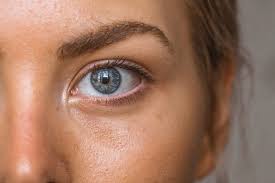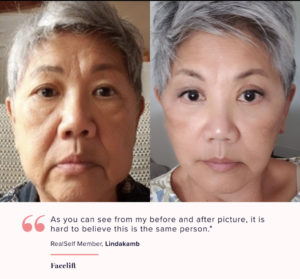Much of medical aesthetics done well, is subtle, so very subtle. People often believe they would not consider aesthetics because of the many, many examples of bad aesthetics we see walking all around us. They don’t want “duck lips” or “trout pouts” or “avatar cheeks”, “chipmunk cheeks” and more.

Many people never notice the temples hollowing even as other indirect signs of this begin to bother them - sagging around the eyes and cheeks, are a great and common example. The temples lose volume with age as fat pads are lost, overlying collagen in skin is lost, and bone gradually erodes.
Since there’s already a natural concavity to the temples—actual hollows in the skull itself—you may see this area changing faster than other parts of the face or not be aware that this is what is contributing to your aged look: worsening of the crow’s-feet, dropping of the outer brow, giving a more mannish appearance, and even changing the shape of the face, giving it a peanut-shell shape.
So what do you need to know to determine if you might be a suitable candidate for temple filler, or if it is what you need instead of more cheek filler?
1. Temple filler is subtle
Almost all the work we do at Skin Essentials is subtle but with temple filler, we often get some pushback “I’ll cover the area with my hair/ scarf” except it doesn’t quite work like that. In order to address the areas that you do see, which bother you, we do need to begin with the temple if they are contributing or responsible for some of those changes. Done well, the temples still remain slightly hollow, but with better blending in of bones between your forehead and eye socket, which become more and more pronounced over time with temple hollowing.
2. Some people are more prone to hollowing in this area
People who are naturally slim will look gaunt earlier, which can give an unhealthy look, but equally, in women, an overly angular appearance to their face which can be displeasing for them. Equally, people who are athletes and into high intensity cardiovascular exercise, are more prone to temple hollowing at earlier ages.
3. The Temples will hollow out in everyone, and those of with big cheeks may look worse than those with symmetrically slim faces
Dr Joshi has yet to have any filler to her cheeks and around her eyes but she had temple filler 2 years ago and is likely due for more now, because when she smiles, her cheeks look “too big” next to her temples and out of balance.
4. Temples are a high risk area, so please choose your doctor carefully.
Experience and qualifications matter here.
Big blood vessels are close to the surface here, and you don’t want an inexperienced clinician treating you here. Look at the price as your insurance in the event something goes wrong and choose wisely.
5. Temple fillers are sensitive
They can feel funny going in, and due to the tight space here, with swelling after treatment, they can cause a tight/swollen sensation, a headache as well as discomfort chewing for a day or two until it all settles. Any lumps or bumps, a given with any fillers, may also look or feel more apparent for a few weeks until they settle.
6. Temples are rarely treated alone
By the time we see patients there’s significant ageing going on in the face, beginning at the temples and extending down to other areas - around the eyes, cheeks, the ears and the lower face. The skin is no longer held up by the loss of fat pads in these areas, and pools around the lower face, giving “eyebags”, hollows, sagging cheeks and eventually, jowls. This is exacerbated if sundamage also contributes to faster collagen loss, with more laxity.

The problem is to begin to address the concern from where it began and it can add up to a fair bit initially (8-10 mls or more depending on the degree of volume loss) over 3-6 months till we’ve addressed all the volume deficit. After that, you may need 1-2 mls a year as and when the need arises.
Left too late, as with the patient on the left, who had a face and neck lift (not my patient), there’s not much we can do non surgically to help, so timeframe matters.
Ready to get started?
If I can offer some advice, it would be to find someone who has a plan with a clear timeframe and budget to help you decide if you want to start at all - if you start, will you make it work and invest in yourself? As always, none of this is medically necessary, so if you are unwilling or unable, then my opinion is, you should not start. If you do decide to start, take a leap of faith with your trusted doctor, invest and trust.
As always, I encourage you to seek the longterm therapeutic relationship over vending machine style aesthetics, wherever you go.
| Monday: | By agreement only |
| Tuesday: | CLOSED |
| Wednesday: | 10:00 - 17:00 |
| Thursday: | 10:00 – 18:00 |
| Friday: | 09:00 – 17:00 |
| Saturday: | 09:00 – 15:00 |
Skin Essentials will reopen the week beginning 11th October 2021.
Per NSW government regulations, only double vaccinated patients will be served when we reopen and we will be checking vaccination certificates for all patients upon booking. This requirement may change as of December 1st, and we will advise you accordingly.
Please email us (contact@skinessentials.com.au) or text us (0413174654) your vaccination certificate as soon after booking as you can. We will not be able to see anyone for treatments or confirm appointments without this.
In the interest of full disclosure, transparency and patient safety, all patient facing staff will be fully vaccinated by the time of reopening. Please read our reopening FAQ for more information.